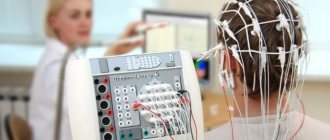Heart tachycardia is a condition in which its beat increases to 900-100 beats in 60 seconds or more. This is not an independent disease - rather, it is a symptom that may indicate pathology. The global medical community considers the normal pulse rate and heart rate to be the indicator approved by the US Heart Association - from 50 to 900-100 beats in 60 seconds. If the threshold is exceeded, but the heart rhythm remains correct and the intervals between contractions are uniform, experts speak of tachycardia.
The condition has many causes, but regardless of them, it is dangerous and requires immediate diagnosis and, in most cases, treatment. Tachycardia leads to accelerated wear and tear of the most important organ, provokes rapid fatigue, and causes unpleasant and often painful sensations. Rhythm disturbances impair conductivity and often cause complications, including:
- cardiac asthma;
- thrombus formation in the vessels of the brain, pulmonary artery;
- arrhythmic shock;
- cerebral circulatory failure, pulmonary edema and, in combination with some types of myocardial infarction, death.
The emerging symptoms of tachycardia require immediate consultation with a doctor, and it itself requires constant prevention. It is necessary to stop smoking, unhealthy diet, and undergo regular diagnostic checks. It is very important to promptly treat teeth and any inflammation: gums, nasopharynx, urinary tract, etc.
Reasons for the development of pathology
Cardiac tachycardia develops for physiological or pathological reasons. In the first case, its manifestations are associated primarily with a person’s natural reaction to external circumstances that cause physical and psycho-emotional stress. Because of it, blood flows more strongly to the organs, provoking tachycardia.
In a physiological course, the causes of the condition may be heat, stuffiness, or high humidity (if a person is sensitive to climate). Tachycardia manifests itself with excitement - and emotions can be both negative and positive. A physiological increase in heart rate is provoked by the use of corticosteroids, atropine and similar drugs, addiction to coffee, strong tea, energy drinks and alcoholic drinks. The basis can be sports training, intense jogging and even climbing stairs, depending on the physiology of the person.
The pathological condition is caused primarily by cardiovascular disorders, endocrine diseases, and deviations from the normal functioning of the autonomic system. The heart beats more often when the temperature rises, pain syndrome of various origins. Other pathological causes:
- heart failure, heart attack, defect (congenital or acquired);
- cardiac inflammatory pathologies - endocarditis, myocarditis and others;
- anemia, large-scale blood loss;
- tumors on the adrenal glands;
- neurosis, psychosis;
- intoxication of various origins;
- thyroid diseases;
- tonsillitis, tuberculosis or other infectious diseases accompanied by fever;
- pheochromocytoma, trauma, severe dehydration and other reasons.
How is cardiac tachycardia classified?
Tachycardia is classified primarily according to the sources of acceleration of cardiac contraction. Different parts of the heart can generate an electrical impulse. Normally, this is the sinus node, from where excitation is transmitted to the myocardium. In pathologies, an electrical impulse is formed in nerve cells located in the atria, ventricles, etc. Accordingly, rapid heartbeat can be sinus, atrial, ventricular or atrioventricular. If an attack suddenly begins and also ends, the condition is called paroxysmal.
Among the types of tachycardia related to disorders of the proper functioning of the heart, there are supraventricular and ventricular. The first is characterized by heart rhythm disturbances at the level of the atria. It can be an independent disease, the cause of which doctors see in the consequences of other diseases or pathologies in the structure of the heart.
Ventricular-type tachycardia, in which the source of the disturbance is located in the ventricles, is a rather serious deviation from the norm. It can also be congenital or acquired after heart diseases: ischemia, cardiomyopathy and similar pathologies. The condition is dangerous with a high risk of rhythm disruption and sudden cessation of heartbeat. Therefore, at the first symptoms you need to consult a doctor.
Physiological tachycardia
As the name implies, this is a normal reaction of the body, a natural physiological process, and is not a disease. Rapid heartbeat can be caused by:
- Emotional experiences (grief, fear, joy);
- Any physical activity;
- Various environmental factors (stuffy room, staying at altitude);
- Increased body temperature (heartbeat increases by 10 beats when body temperature rises by 1 degree).
Hot flashes during menopause, banal overeating, and allergies can provoke an attack of tachycardia. The heart rate may increase with frequent consumption of strong coffee or tea, or energy drinks.
A distinctive feature of tachycardia in a healthy person is the absence of pain in the heart. Normally, after 2-5 minutes the pulse recovers on its own; no treatment is required. To determine the maximum allowable heart rate, subtract your age from 220. For example, a person is 60 years old. It is necessary from 220-60 = 160, which means that his pulse during exercise should not be more than 160 beats per minute.
Features of diagnosing tachycardia
To correctly interpret the symptoms of tachycardia, make a diagnosis and, if necessary, determine a treatment protocol, the doctor conducts a multifaceted diagnostic study, which includes:
- initial survey of the patient - the doctor finds out what circumstances provoke an attack of tachycardia, how long it usually lasts, how suddenly it occurs, what kind of lifestyle the person leads, etc.;
- examining the patient, listening with a stethoscope to detect heart murmurs;
- electrocardiographic examination - an ECG that records electric fields is included in the mandatory diagnostic procedures;
- daily monitoring (in particular, according to the Holter method) - special devices are attached to the patient, recording the rhythm and changes in heart activity for 24 hours in standard living conditions for a person;
- laboratory blood tests;
- chest X-ray, echocardiography, MRI, EPI and other studies of the mechanism of tachycardia.
Depending on the type of tachycardia, the diagnostic protocol may differ. For example, to identify the causes of sinus disorders, an ECG (both single-stage and 24-hour) is used, and intracardiac pathologies are detected on MRI or EchoCG. Cardiologists also study how an electrical impulse propagates through muscles and determine conduction disturbances using EPI. To exclude diseases of the blood and central nervous system, the brain is examined and tests are done.
With ventricular tachycardia, as a rule, standard electrocardiography is sufficient, providing information about the localization of disorders. The study is complemented by daily monitoring - it provides information about the duration of attacks and connections with external factors. EPI reveals the electrophysiological properties of the pathology. In some cases, cardiac telemetry and loop monitor implants are required.
Atrial tachycardia is most often detected during ECG stress tests or based on complaints: heart pain, dizziness. It can only be diagnosed during attacks - cardiologists sometimes stimulate them artificially. Atrioventricular pathology is determined by history and physical examination. It is also diagnosed using stress ECG: tests, daily Holter monitoring, and PPPS.
The doctor will help you in the future
The doctor must decide what to do next. Be sure to consult a doctor. The sooner first aid is provided and the cause of the disease is determined, the more effective the treatment process will be. The main task is to find and eliminate the cause of tachycardia.
Only a doctor can make a correct diagnosis, prescribe medications if necessary, and, if necessary, recommend surgical treatment.
For any form of tachycardia, the treatment complex includes physical therapy (physical therapy), dietary, balanced nutrition, dosed walking, proper sleep, and elimination of factors causing the disease. It is definitely recommended to give up bad habits, not self-medicate and lead a healthy lifestyle.
Symptoms and treatment of sinus tachycardia
Sinus disorders are diagnosed more often than others. The “risk zone” includes elderly people and patients with hereditary pathologies. The peculiarity of this type of tachycardia is the correctness of the heartbeat rhythm when the frequency increases to 180-220 beats in 60 seconds and the gradual onset and end of the attack. It is caused by external manifestations that provoke excessive automatism of the sinoatrial node.
There is a rare sinus type - inadequate, with unclear genesis and manifestation at rest. This is a little-studied condition that occurs more often in women and young people and is accompanied by persistent palpitations, shortness of breath and constant weakness for at least three months.
Tachycardic attacks may be asymptomatic, but are more often accompanied by:
- feeling of lack of air;
- dizziness and even fainting - blood supply to the body is disrupted due to impaired cardiac output;
- shortness of breath, weakness, fatigue;
- insomnia, decreased appetite and performance;
- prolonged rapid heartbeat;
- a feeling of cold in the arms and legs, a decrease in blood pressure and diuresis.
The severity of symptoms depends on your personal sensitivity threshold. Only inadequate tachycardia is subject to treatment; for physiological (adequate) tachycardia, drug therapy is not prescribed. You only need to eliminate external factors: eliminate junk food, minimize alcohol, quit smoking, balance physical activity, etc. Most often, doctors treat the disease that causes pathological tachycardia, removing it as a symptom.
Symptoms
Patients with constant rapid heartbeat complain of lack of air, dizziness, nausea, fatigue, and constant weakness. The pulse rate reaches 130 beats per minute.
Paroxysmal tachycardia usually begins suddenly. The pulse rate reaches 200 beats per minute and above - sometimes it is even difficult to count it. Patients may complain of palpitations (the heart is pounding, jumping out of the chest), dizziness, shortness of breath, darkening of the eyes, a feeling of fear, chest pain, and may faint. The attack may also end suddenly.
The first thing to do in case of tachycardia is to undergo special examinations
Signs and treatment of ventricular tachycardia
The ventricular type is characterized by a heartbeat of up to 220 beats in 60 seconds and the heart working in a dangerous mode, which often leads to failure. It provokes ventricular fibrillation, which threatens circulatory arrest, even death.
Such tachycardia appears suddenly, and most often as a symptom of an underlying disease. The condition may be hemodynamically stable or unstable. With stability, the heartbeat quickens, the patient feels heaviness, compression in the chest area, and becomes dizzy. In an unstable condition, a few seconds after the onset of the symptom, the patient loses consciousness.
Treatment aimed at reducing the frequency of attacks includes catheter ablation and, in special cases, implantation of a cardioverter defibrillator. It monitors the heartbeat and, if necessary, generates a weak electrical discharge. It is not yet possible to achieve tangible results with medication.
To relieve a sudden attack, the patient must:
- take a deep breath;
- hold your breath for a while;
- then exhale slowly.
You need to repeat the sequence for at least five minutes, controlling the uniformity of inhalations and exhalations. You also need to close your eyes, press on the eyeballs and hold the pressure for about 10 seconds. Washing with cold water helps reduce paroxysms. In case of serious attacks, it is necessary to provide the patient with complete rest and immediately call an ambulance.
Atrial and atrioventricular varieties
The atrial type of tachycardia is rarely detected. It occurs in a small area, appears irregularly, but can last for several days or even months. In patients with severe heart failure and the elderly, there may be several lesions, but most often the condition is harmless, asymptomatic or with mild manifestations. This may include dizziness, shortness of breath, and chest pain. This condition is treated with standard medications: quinidine and other depressants, antiarrhythmic drugs, anesthetics. In difficult cases, surgical catheter ablation is performed.
The atrioventricular type is divided into two types: nodal and with additional pathways. Tachycardia is quite common (especially in women), attacks are rare, begin suddenly, last from several minutes to a day or more. Among the symptoms:
- pulsation in the cervical area characteristic of a tachycardic attack;
- decrease in blood pressure;
- anginal pain;
- suffocation and loss of consciousness.
The frequency and severity of paroxysms are successfully reduced with medication and physiotherapy. The cardiologist determines the treatment method, focusing on the origin of the pathology, existing complications, and the course of paroxysms.
Tachycardia in children
For children, a normal heart rate is considered to be from 123 beats per 60 seconds in newborns to 115-119 beats in adolescents about 13-15 years old. Patients of preschool and school age, especially asthenics with a narrow chest, most often suffer from the supraventricular variety. It does not require medical intervention and goes away as you grow older. Ventricular tachycardia is less common, but if left untreated it can be life-threatening.
Children with heart rate abnormalities are usually moody and restless, and newborns experience increased drowsiness. In severe paroxysms, pulsation of the veins, blueness and pallor of the skin and mucous membranes are observed. The child may sweat, choke, complain of chest pain, dizziness and nausea. Other symptoms include shortness of breath, weakness, palpitations and even fainting.
If the child is small and cannot talk about sensations, the pathology is diagnosed using laboratory and instrumental tests: blood tests, urine tests, ECG, 24-hour Holter monitoring, etc. The nature of treatment depends on age; as a rule, it is carried out with medication. Surgical interventions and radiofrequency ablation are rarely used.
Diagnostics
Based on the symptoms and collection of anamnesis (patient complaints), one can suspect the cause of tachycardia. To make an accurate diagnosis, the doctor will prescribe special examinations: an electrocardiogram (ECG), ultrasound of the heart (ECHOCARDIOGRAPHY), general blood test, urine test, blood test for hormones.
Currently, it is possible to monitor the work of a patient’s heart in the normal rhythm of life. Using a portable device, which is attached to the belt under clothing, an ECG is continuously recorded throughout the day. This procedure is called 24-hour Holter ECG monitoring. It can be done in the hospital and at home.
Tachycardia in pregnant women
Very often, tachycardia is diagnosed in women expecting a child. Pregnancy is accompanied by changes in the cardiovascular system, as well as other circumstances that provoke pathology:
- anemia, abnormalities in the thyroid gland;
- weight gain, dehydration;
- overdose of vitamins, medications, etc.
Often attacks occur with placental abruption, ectopic pregnancy and pulmonary infections that easily affect a weakened body. Tachycardic paroxysms are caused by stress, a constant feeling of anxiety that accompanies many pregnant women, and existing bad habits: smoking, addiction to energy drinks.
An increase in heart rate in women expecting a child is considered a physiological norm. However, you should consult a doctor if you have warning symptoms: nausea or vomiting, unreasonable fatigue, anxiety, chest pain, dizziness.
The largest clinic in the Moscow region, Health, will provide assistance with any manifestations of tachycardia. Specialists will identify its root causes, carry out diagnostic procedures, find the best treatment tactics and determine whether the symptom “signals” serious cardiovascular pathologies.
Pathological tachycardia
A pathological attack of tachycardia is usually a consequence of some disease, for example:
- Dystrophic changes in the heart muscle;
- Failure in the endocrine system (hyperthyroidism);
- Disturbance in the process of impulse conduction (between the atrium and the ventricle, in the sinus node);
- Hemodynamic disorders (low blood pressure, dehydration (excessive, frequent vomiting, diarrhea), prolonged or heavy bleeding (trauma, uterine bleeding);
- Myocardial infarction;
- Overdose of cardiac glycosides;
- Vegetative-vascular dystonia, most often in young people);
- Neuroses.






